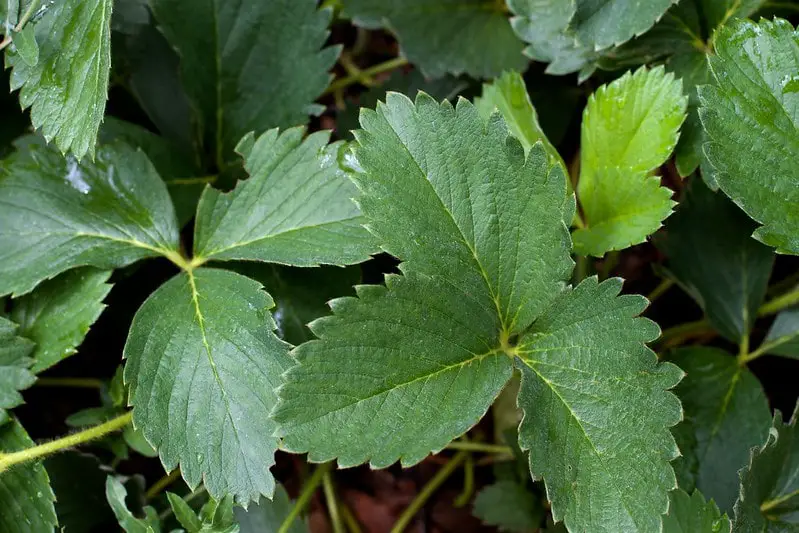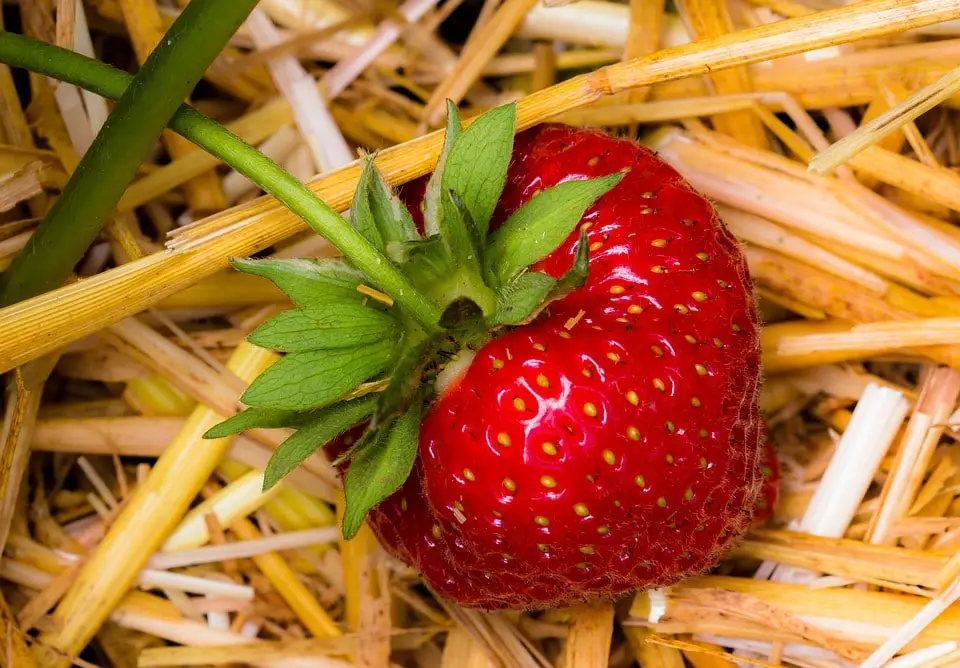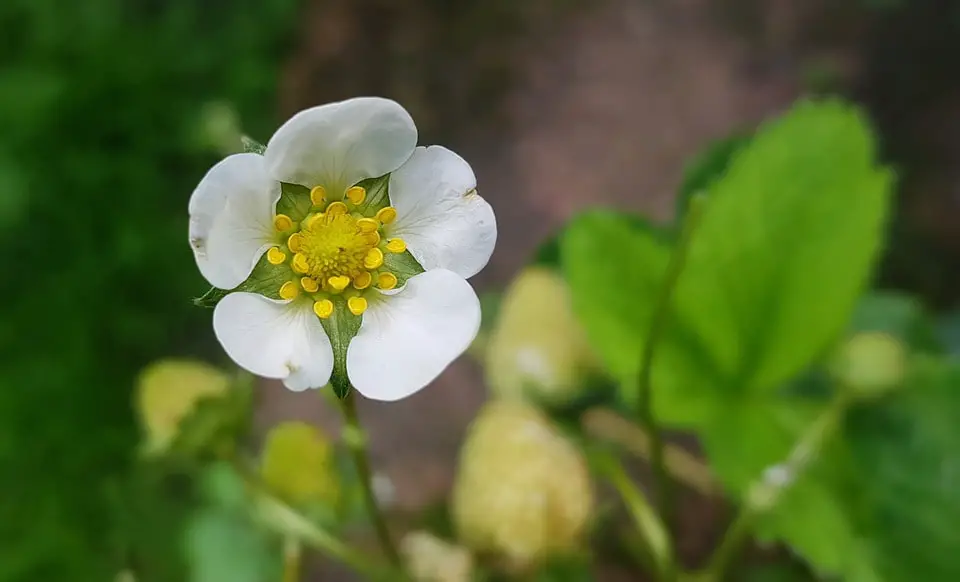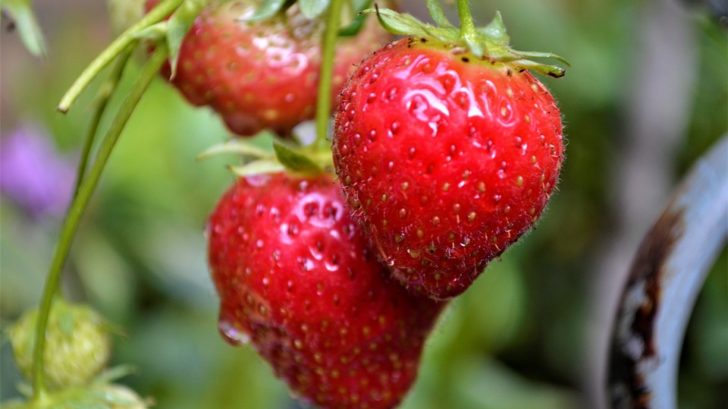We use affiliate links to run our site. When you buy through links on our site, we may earn an affiliate commission, without any added cost to you. Learn more
Looking for an easy and healthy way to get your daily dose of fruit? Look no further than growing strawberries at home.
Homegrown strawberries are always best in taste. They are nutritious and are quite easy to grow. In this article, we will discuss how to grow strawberry plants in your garden.
Strawberry plants are low-growing perennials that give a delicious supply of fruits. While establishing and maintaining a strawberry patch might seem like a lot of work, A strawberry plant is actually easy to grow if you know the basics.
With this guide, you will learn everything you need to get started including how much space you need, the best plants for strawberry growing, and how to properly care for your crop.
So without further ado let’s start discussing some growing tips for one of our favorite fruits: STRAWBERRIES.
Table of Contents
Strawberry Varieties:
If you are growing strawberry plants pay close attention to the types of strawberries you choose. Always choose the variety that is best suited to your area.
There are mainly three varieties of strawberries:
1. June Bearing Strawberries:
This strawberry variety generally bears fruits in the month of June but it can be early or later depending on your locality. Commercial growers prefer this variety of strawberries due to their monstrous yield.
June bearers start to ripen within 30 days past bloom. You generally have about 10 days to harvest the fruits.
June-bearing strawberries are also known as the early summer variety.
Strawberries are one of your nutritious assets in the garden. These low-growing perennials give a delicious supply of fruits and are quite easy to maintain Click To Tweet2. Day-neutral Strawberries:
This strawberry variety bears throughout the growing season and has three peak periods of fruiting. The modern-day-neutral varieties keep producing fruits continuously all summer and into the fall.
Day-neutral strawberries produce fruit throughout the growing season with just a few runners.
3. Ever-bearing Strawberries:
Ever-bearing strawberries produce two crops in a year. The variety is generally not of very high quality and has a modest-sized crop.
They generally begin fruiting in spring, with intermittent crops throughout summer and early fall. ever bearers are a delicious source of fresh fruit in the home garden.
Ever-bearing and day-neutral strawberries are great for you if you have limited space. They do not produce many runners.
You can grow these varieties of strawberries in terraced beds, barrels, or pyramids. You can also use them as a ground cover.
Planting Strawberries:

Though in most cases we plant strawberries in raised beds or garden rows, you can grow strawberries even in containers and hanging baskets.
Strawberries require full sun to thrive, so make sure your place gets at least 6 hours of sunlight daily. Strawberries are very tolerant plants and you will find them in most countries.
If your area is very windy make some arrangements to protect the plant from the wind.
Strawberries need full sun. Make sure your place gets at least 6 hours of sunlight. Click To TweetIdeal Soil and Fertilizers For Growing Strawberries:
It is always better to use raised garden beds than direct soil to plant strawberries. You can use the same garden bed for up to three years to grow strawberries provided you have not planted any Solanaceae (Tomato, Eggplant) plants there earlier.
Replace the strawberry bed once you see the fruits begin to become smaller (generally after 3rd year). Crop rotation can be a good idea for the same garden bed.
Strawberries prefer slightly acidic soil. The ideal pH for growing strawberry plants is around 6.5.
You can use the same garden bed for up to 3 years to grow strawberries if you have not planted any Tomato or Eggplant there earlier. Click To TweetTo make the strawberries flourish, add a good amount of compost to the soil. However, do not over-fertilize the soil. If you do that it will result in excessive vegetative growth and reduced yield. You can increase your strawberry yield by using coconut coir as a growing medium.
How To Plant Strawberries?
Strawberry seedlings send out runners, or ‘daughter’ plants, which in turn will send out their own runners.
Always plant strawberries during the late afternoon. Plant them in rows 50 cm apart. Keep close to a meter gap between the rows. Matted row planting is the most popular way of raising strawberries.
Cover the top of the roots but leave the crown uncovered. After a few weeks, these plants will act as mother plants and will produce their own runners and daughter plants.
The best time to plant strawberries is in the spring, a few weeks before the last frost date. Plant different varieties of strawberry plants so that you can spread your harvest from late spring through to early fall.
Mulching Your Strawberry Plants:

Your strawberry plants need mulching for protection from cold. Apply approximately 4 inches of mulch in December or before the frosting date.
You can remove the mulch cover in springs once the dangers of frosting are over. Once you see the fruits begin to form apply a layer of straw mulch.
These have dual benefits. They not only help to retain the moisture in the soil but also save the fruit from getting dirt once it is matured.
Strawberry Flowers:

Strawberries have intricate flowers. Like most fruit, strawberries also come from the delicate flowers of each strawberry plant.
Strawberry flowers originate in the crowns of plants. They begin their life as tiny flower buds within a strawberry plant.
All strawberry plants have flowers but they are not identical—the look changes according to different varieties.
Pruning Your Strawberry Plants:
Once the plants start growing bigger, they will extend many runners. It is important to do some pruning at this time.
Remove most of the runners so that the energy flows directly to the plant and will result in good quality fruits.
The best equipment for this is pruning shears. You can also use your fingers to pinch them off. Be very careful so that you don’t damage the roots of the plant.
Harvesting and Renovation:
Strawberries are generally ready for harvesting after 4-6 weeks of blossoming. Use a sharp knife to cut the stem. Don’t pull the fruits it can damage the plant. After harvesting store the strawberries in the refrigerator.
Renovation is an important part of strawberry plant care. If you want to make you get a good yield you need to renovate the soil every year after the harvest. Here is the renovation process in simple steps:
- First, mow the old plants with a mower from 1 inch above the crown.
- Add good-quality compost to the soil.
- Remove the weeds.
- Thin the plants into narrowed rows.
- Water the soil to promote growth.
Bird Control In Strawberry Gardening:
Birds can be a serious threat to your strawberry production. One of the possible solutions is to use bird nets.
Anchor the net all the way around the planting and cover the plants carefully. If you are failed to anchor the net birds will walk under it.
Diseases of Strawberries:
The unfortunate part of strawberry is that it is quite prone to diseases. So start smart. Buy only certified plants from your nearby nurseries.
Once the plant starts growing clear away any dead leaves in the plant. Keep a close eye on any aphids or worms in the plant.
Nutritional Value of A Strawberry:
Apart from the delicious taste eating strawberries are also good nutrient-wise. Strawberries are rich in vitamin C and potassium. So you can enjoy the fruit and also get those needed vitamins and minerals into your system.
Tricks and Tips:
Strawberry plants are easy to grow and provide bountiful yields of delicious fruit. However, there is one simple trick that can help ensure healthy plants and high yields.
In the first year, pick off blossoms to discourage strawberry plants from fruiting. This will make their roots healthy and more robust and the yields will be huge in the second year.
Conclusion:
Growing strawberries is easy with a little bit of preparation and attention to detail. Planning your garden wisely and fertilizing regularly will help you produce large, sweet strawberries.
Finally, remember to keep an eye on the weather and take appropriate precautions if temperatures start to drop late in the season.
Go ahead and use the strawberry growing tips that are discussed in this article and you’ll be harvesting sweet, delicious strawberries in no time!
I hope this post was helpful to you. If you liked the article please share it with others also.
Don’t forget to PIN IT

Amazon and the Amazon logo are trademarks of Amazon.com, Inc, or its affiliates.

How do you rid the slugs from my strawberries?
I use crushed and ground up egg shells. I put it around my hostas also. Haven’t seen a slug sence I started to do this.
A nicely detailed article. Thanks!
Could you tell us which of the three varieties has the best taste?
Hello just wanted to give you a brief heads up and let you know
a few of the images aren’t loaing correctly. I’m not sure why but I
think its a linking issue. I’ve tried it in two different web browsers and both
show the same outcome.
To kill a lot of slugs at one time see a small tray about at least 1/2 in deep put about 3/4 full of a cheep bear they love bear and can not resist it so they crawl in but they can not swem so they drown . I have fought 8 slugs in one 4 in dis pie pan.
How often should I water? Should the soil always be moist?
How to get rid of ants that eat the strawberries?